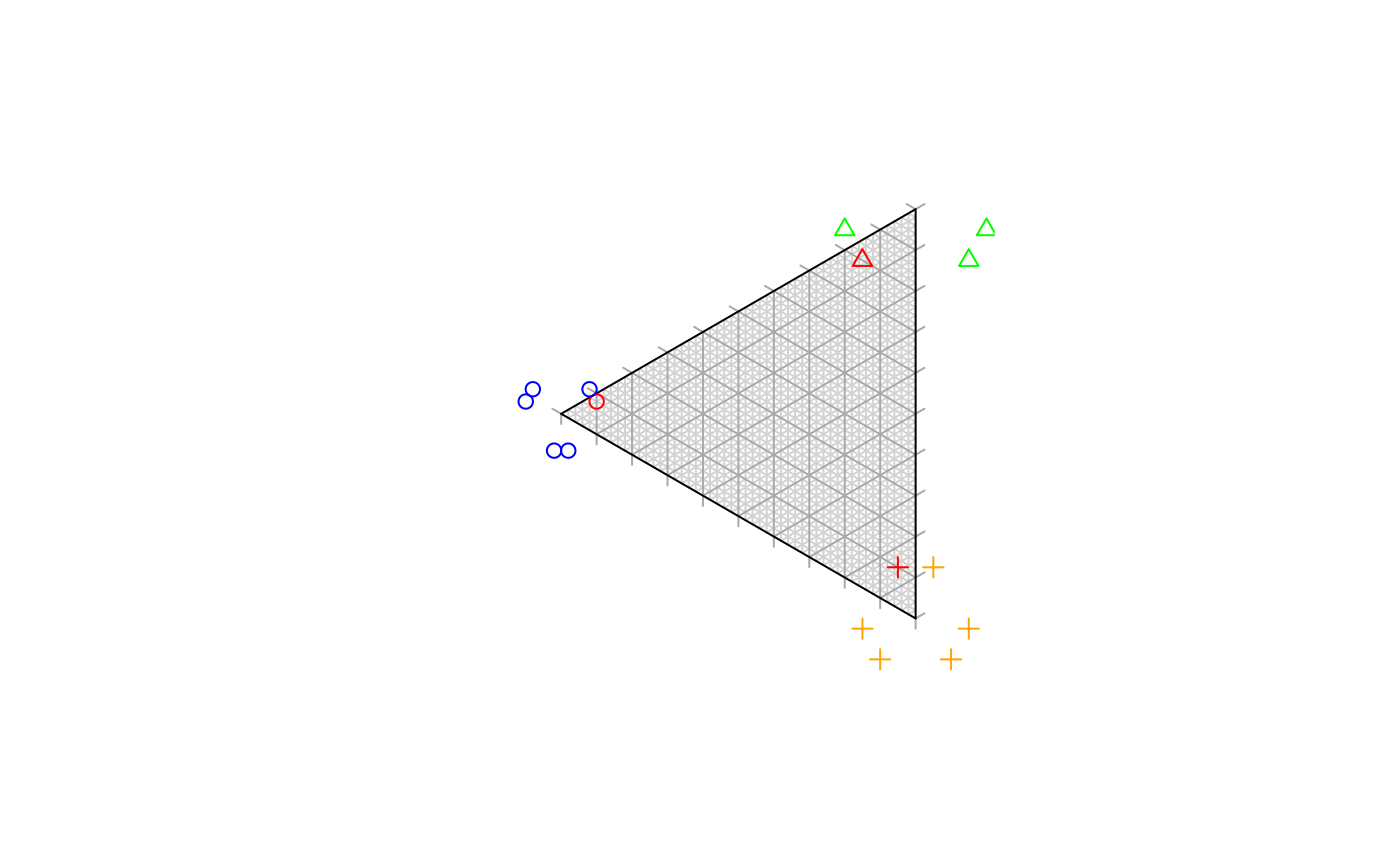Reflected equivalents of points outside the ternary plot
Source:R/Coordinates.R
ReflectedEquivalents.RdTo avoid edge effects, it may be desirable to add the value of a point within a ternary plot with the value of its 'reflection' across the nearest axis or corner.
ReflectedEquivalents(x, y, direction = getOption("ternDirection", 1L))Arguments
Value
ReflectedEquivalents() returns a list of the x, y coordinates
of the points produced if the given point is reflected across each of the
edges or corners.
See also
Other coordinate translation functions:
TernaryCoords(),
TriangleCentres(),
XYToTernary()
Examples
TernaryPlot(axis.labels = FALSE, point = 4)
xy <- cbind(
TernaryCoords(0.9, 0.08, 0.02),
TernaryCoords(0.15, 0.8, 0.05),
TernaryCoords(0.05, 0.1, 0.85)
)
x <- xy[1, ]
y <- xy[2, ]
points(x, y, col = "red", pch = 1:3)
ref <- ReflectedEquivalents(x, y)
points(ref[[1]][, 1], ref[[1]][, 2], col = "blue", pch = 1)
points(ref[[2]][, 1], ref[[2]][, 2], col = "green", pch = 2)
points(ref[[3]][, 1], ref[[3]][, 2], col = "orange", pch = 3)
